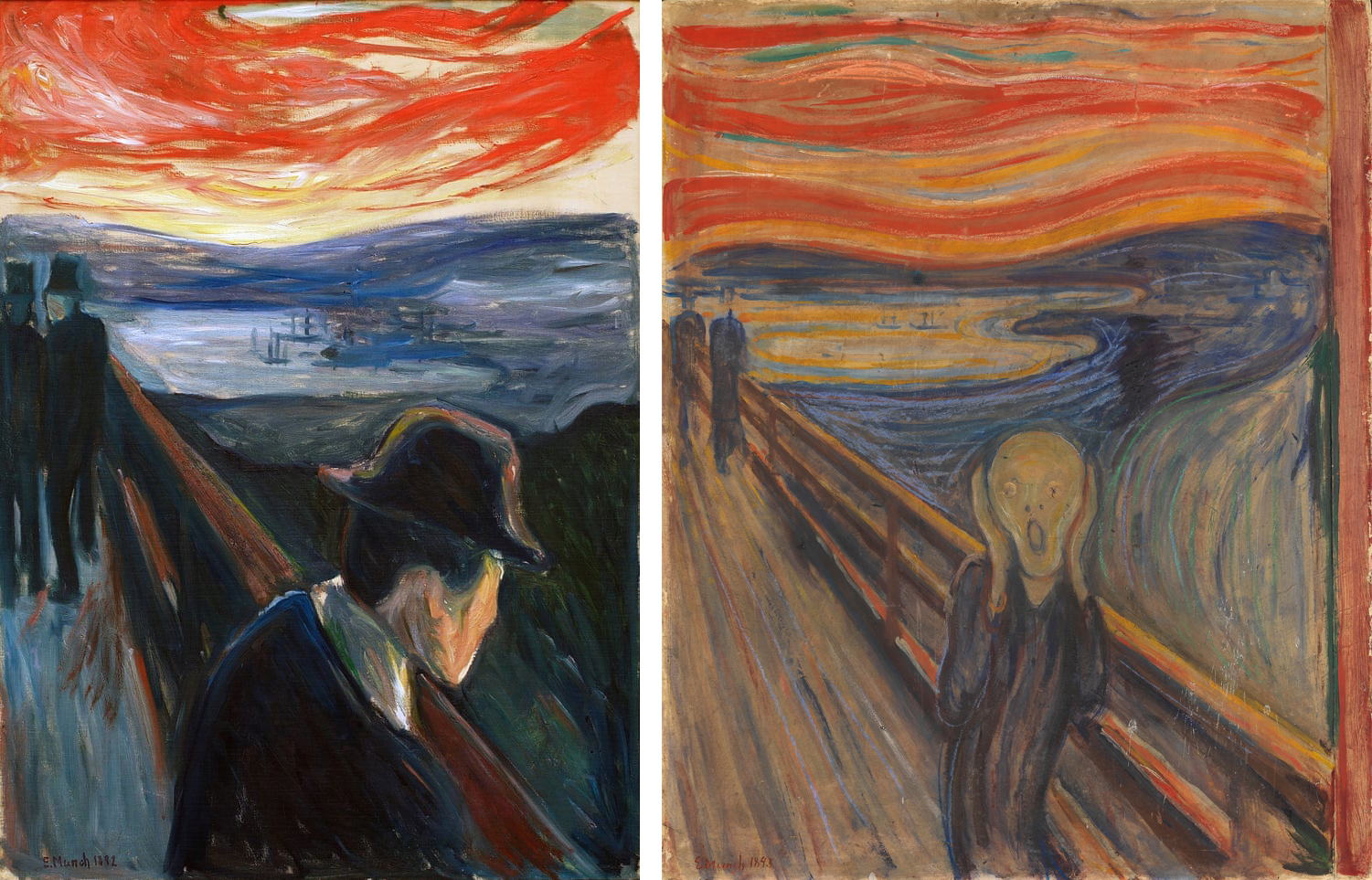
Left: Edvard Munch, Despair (Sick Atmosphere at Sunset), 1892, oil on canvas, 92 x 67 cm (Munch Museum, Oslo); Edvard Munch, The Scream, 1893, pastel and tempera on cardboard, 91 x 73.5 cm (National Art Gallery, Oslo)
Edvard Munch’s The Scream is recognized from Toledo to Timbuktu as a powerful visual expression of anxiety, but it had its genesis in a very specific place. As the artist recollected in a diary entry of 22 January 1892:
I was walking along the road with two friends – the sun went down – I felt a gust of melancholy – suddenly the sky turned a bloody red. I stopped, leaned against the railing, tired to death – as the flaming skies hung like blood and sword over the blue-black fjord and the city – My friends went on – I stood there trembling with anxiety – and I felt a vast infinite scream [tear] through nature. [1]
Munch was deeply affected by this incident and depicted it several times: first as Despair in 1892, and then in several different versions in different media under the title The Scream.
Munch’s moment of anxiety occurred on a road along Ekeberg Hill overlooking Oslo. The wooden railing visible in the paintings and mentioned in his diary lined the steep cliffside of the fjord protecting Oslo’s port. There is even some evidence that the famous blood-red, undulating sky that Munch associated with this feeling may also have been geographically specific. It closely resembles the pattern formed by polar stratospheric clouds visible almost exclusively in Northern Europe during the winter dusk.
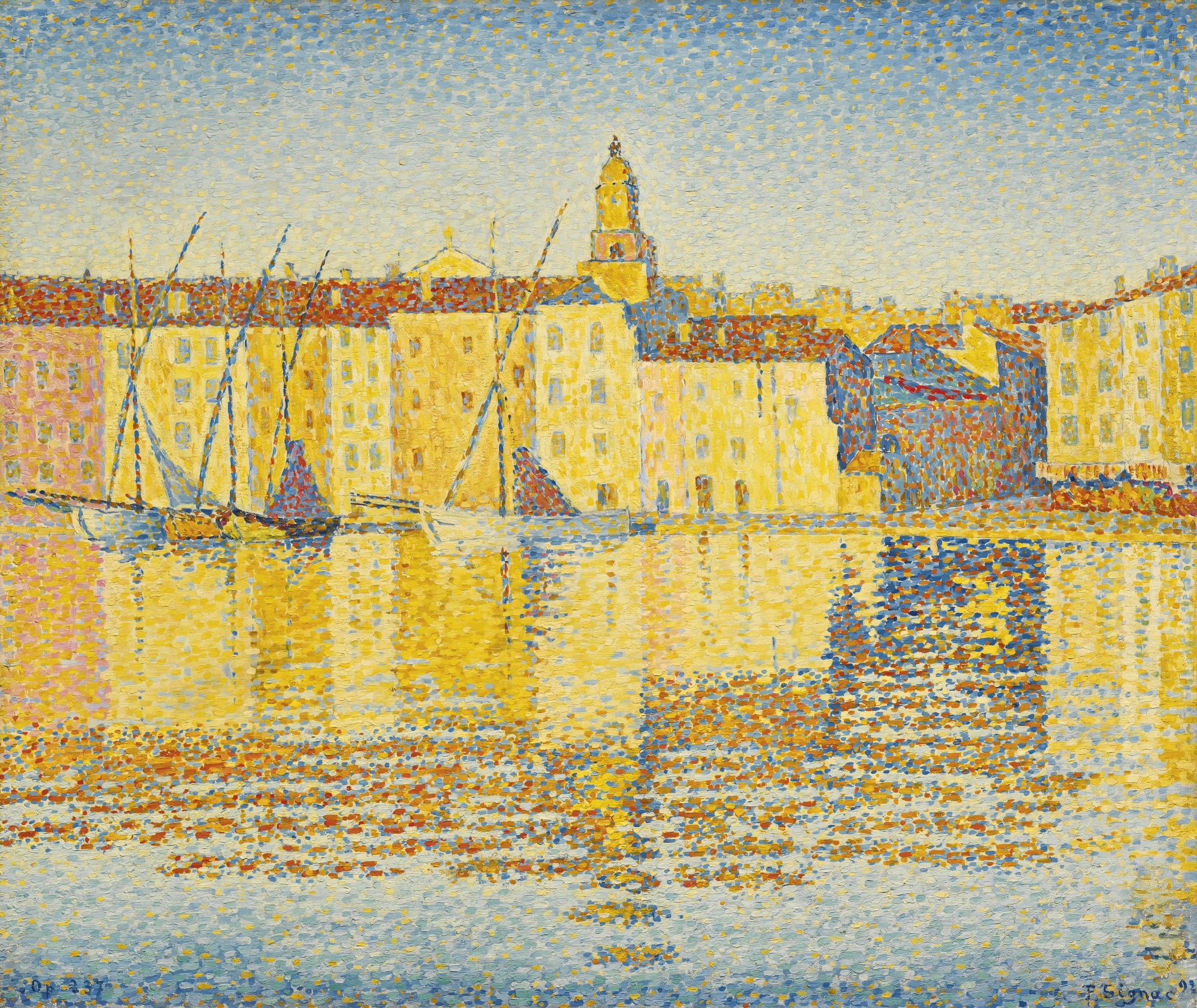
Paul Signac, Houses in the Port of Saint-Tropez, Opus 237, 1892, oil on canvas 46.5 x 55.3 cm (private collection)
Munch’s vivid diary entry occurred in a very different location, however: Nice, in the south of France, where the artist was vacationing at the time. Even the relative warmth and bright sunshine of the French Mediterranean, evoked in this contemporary painting of Saint-Tropez by Neo-Impressionist artist Paul Signac, could not relieve Munch of the deep anxiety he remembered experiencing in the cold north.
Climatic determinism
This contrast between Norway and the south of France in terms of temperament as well as temperature illustrates what was once a commonplace of cultural geography: the idea that climate significantly shapes the psychological characteristics, not just of individuals, but of whole societies. Although this idea is currently discredited by its association with racist pseudo-science, it had widespread currency during the late nineteenth and early twentieth centuries. It was commonly believed that there was a major cultural divide in Europe between the sun-filled south, associated with temperate, Classical rationality, and the cold north, which was riddled with spiritual angst and melancholy.
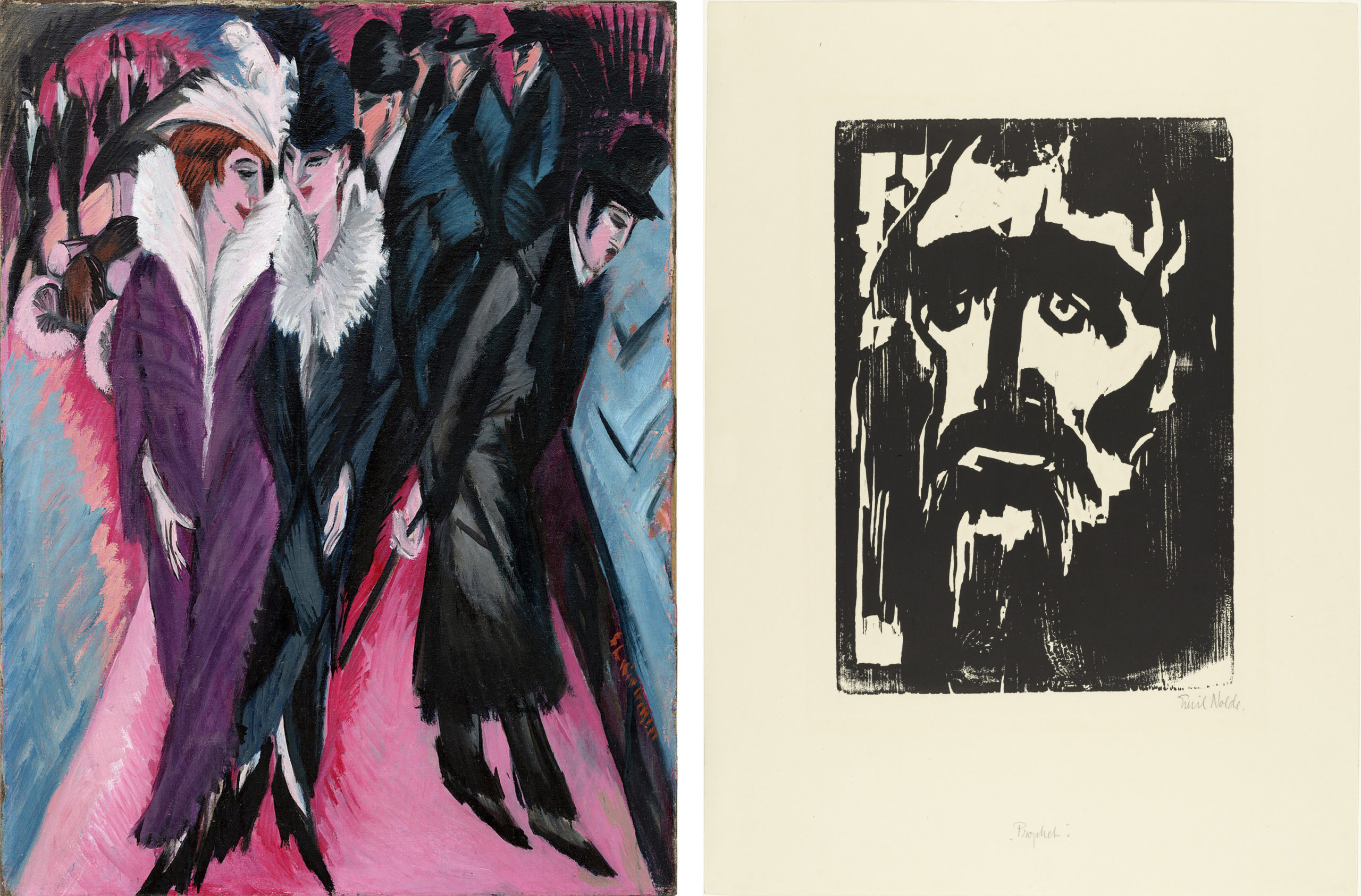
Left: Ernst Ludwig Kirchner, Street, Berlin, 1913, oil on canvas, 120.6 x 91.1 cm (MoMA); right: Emil Nolde, The Prophet, 1912, woodcut, 50 x 36.5 cm (MoMA)
Even today, Expressionist art is primarily associated with northern Europe. Many Scandinavian and German Expressionist artists took great pride in their Nordic or Teutonic heritage and attempted to define and revive a distinctly Northern European artistic tradition that was fundamentally different from Mediterranean Classicism.
Classical versus Gothic
One champion of this idea was the German art historian Wilhelm Worringer, whose book Form Problems in the Gothic (1910) provided an important theoretical framework for German Expressionism. For Worringer, the Gothic was more than just a late Medieval style. There was a “latent Gothic” in the art of the Germanic tribes (called Goths) that fought against Rome, running through the distinctively Northern versions of the Renaissance and Baroque periods, and continuing into his own time. This tradition had, however, been overshadowed by Mediterranean Classicism, which had long been considered the aesthetic ideal. Northern Gothic art was seen as an incompetent attempt at naturalism, rather than a distinct tradition of its own.
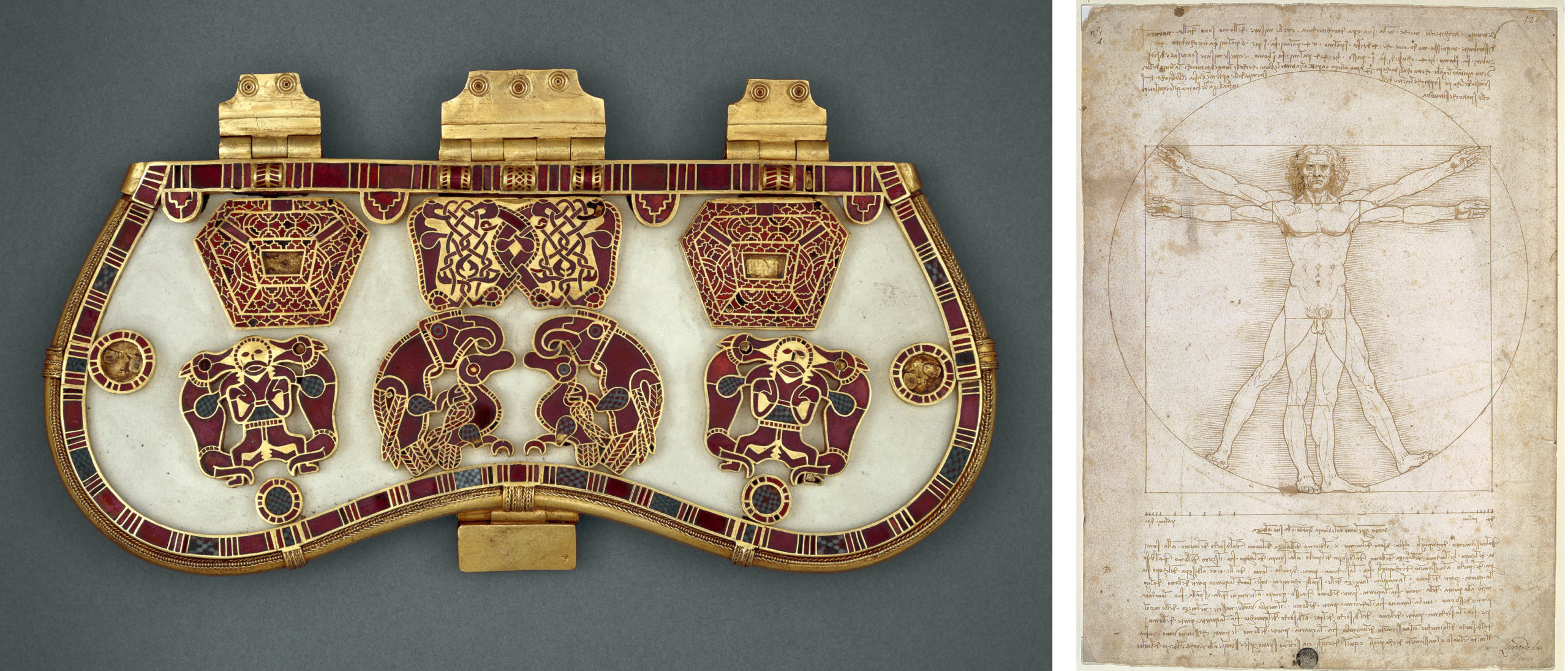
Left: Purse lid from the Sutton Hoo ship burial, early 7th century, gold, garnet and millefiori, 19 x 8.3 cm (British Museum, London); Right: Leonardo da Vinci, Vitruvian Man, 1490, pen and ink wash over metalpoint on paper, 34.6 x 24.4 cm (Galleria dell’Accademia, Venice)
Worringer described Mediterranean Classical art as rational, beautiful, joyful, and tranquil, while he saw the Northern Gothic tradition as more spiritual and as having greater “depth, grandeur, and power.” [2] In a particularly vivid passage, Worringer contrasts the type of line preferred by each of these traditions. Classicism tends toward “beautiful, round, organically tempered curves” where the Gothic prefers a “stiff, angular, repeatedly interrupted, jagged line of [the] strongest expressive force.” This difference in style results from different temperaments of the Germanic versus Latin peoples:
As those line scrawls seem merely the release of an inner spiritual pressure, so the excitement, the convulsiveness, the fever, of northern drawing unquestionably throws a flashlight upon the heavily oppressed inner life of northern humanity. [3]
For Worringer, artistic style reveals the inner, psychological state, not just of the individual artist, but of an entire culture.
Woodcut prints and Expressionism
According to Worringer, even Nordic artists who adopted some Italian Classical characteristics, such as the German Renaissance printmaker Albrecht Dürer, remain fundamentally Gothic in their approach. Dürer’s woodcut prints embody the jagged, angular linearity and flat space that is characteristic of Worringer’s Gothic.
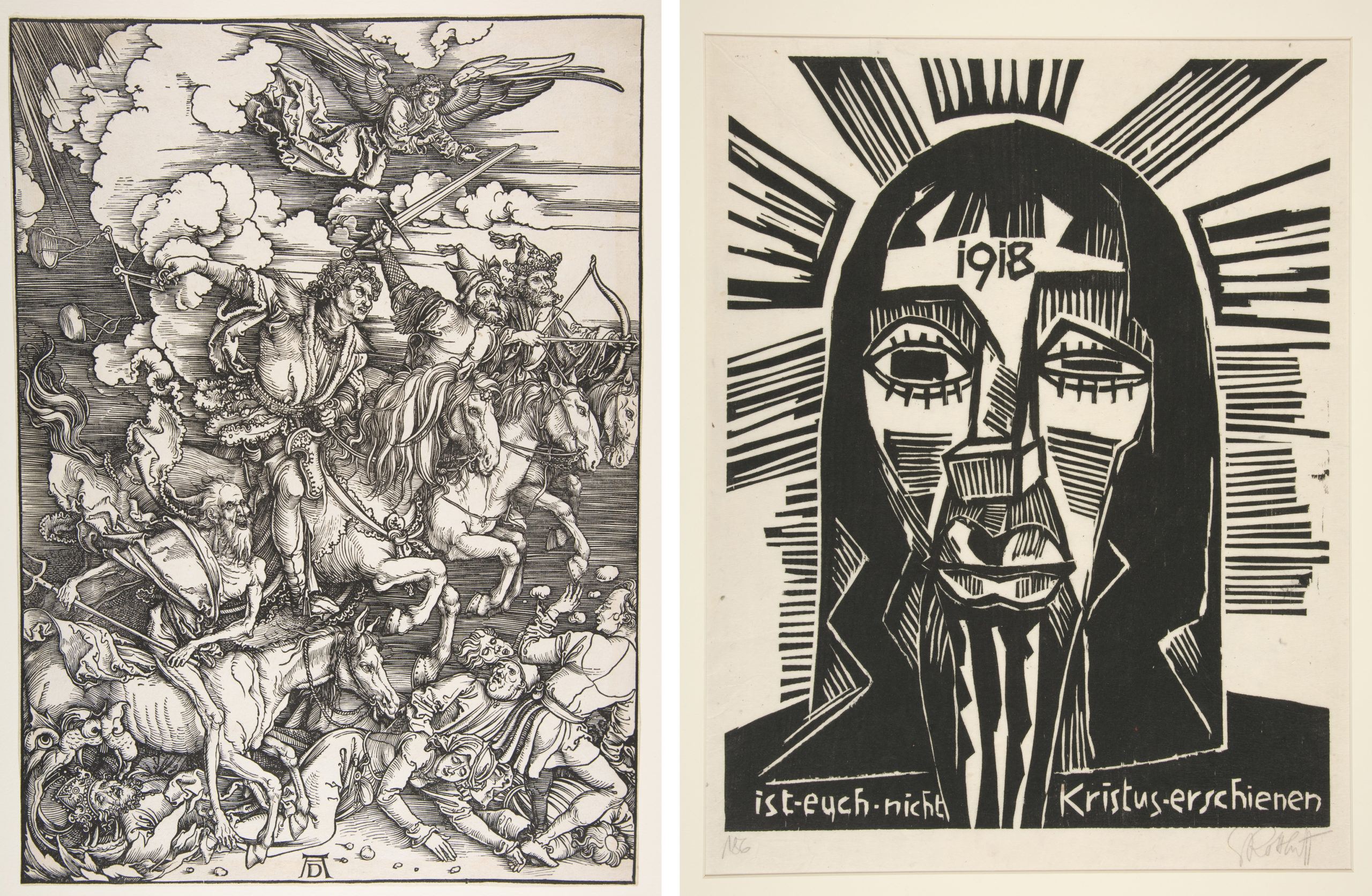
Left: Albrecht Dürer, Four Horsemen, from The Apocalypse, 1498, woodcut 14¼ x 11 (The Metropolitan Museum of Art); right: Karl Schmidt-Rottluff, Did Christ not appear to you?, 1918, woodcut, 32 x 74.2 cm (Yale University Art Gallery)
The German Expressionists deliberately revived the technique of woodcut printing because of this relatively crude, expressive style, as well as its nationalistic association with great German artists such as Dürer. Like Worringer, the German Expressionists saw a jaggedly angular, flat style as an authentic expression of their national tradition.
Both of these prints, furthermore, radiate the spiritual angst that Worringer associated with Nordic psychology. Dürer’s shows the four horsemen of the Apocalypse wreaking havoc in the world, while Schmidt-Rottluff’s Christ confronts the viewer with a face swollen and misshapen by torment. On his forehead the year 1918 is emblazoned in order to connect Christ’s suffering with the contemporary state of the world, then enmeshed in the first World War.
Emil Nolde and Expressionist nationalism
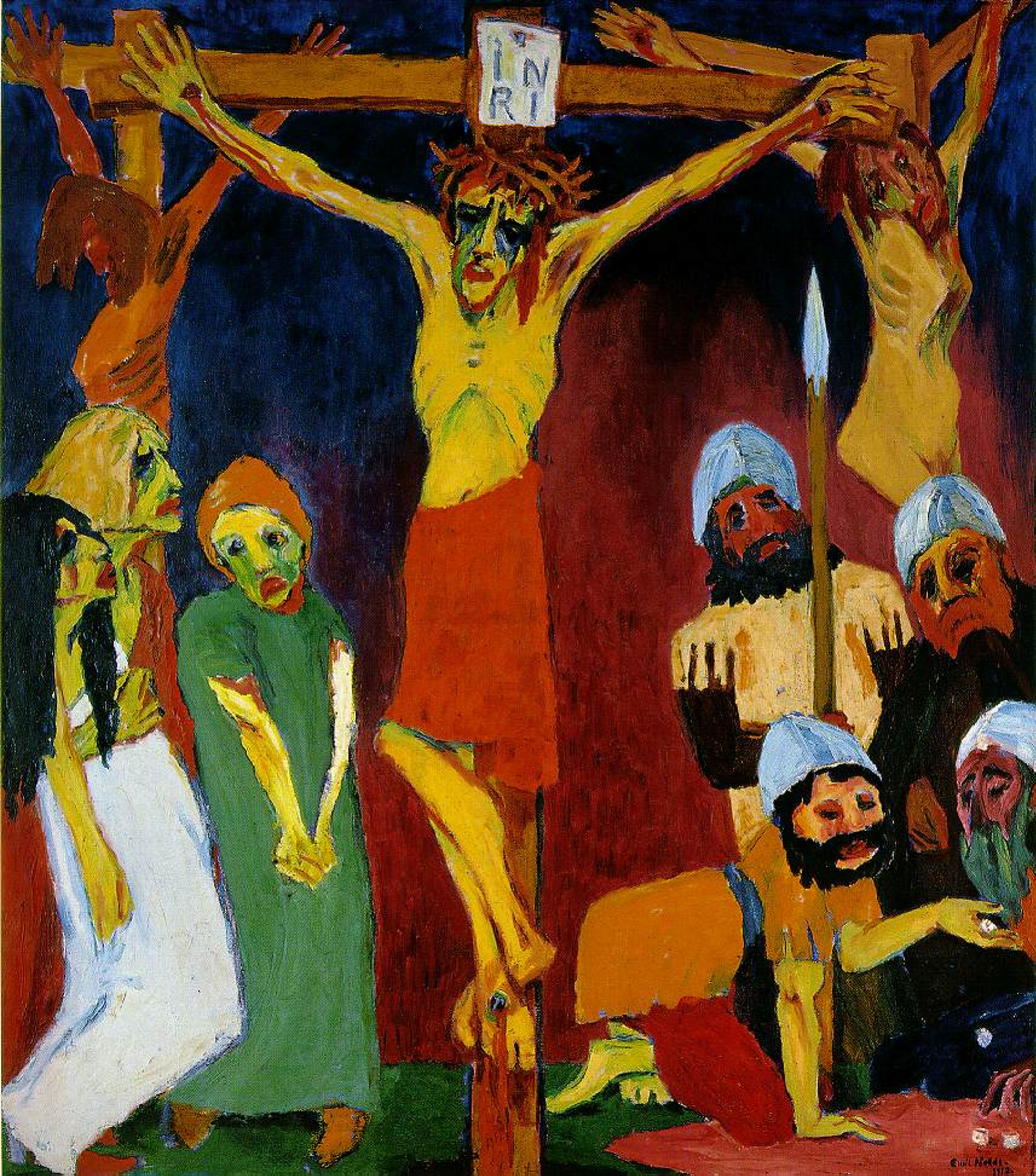
Emil Nolde, Crucifixion, from The Life of Christ (polyptych), 1911-12 (Neukirchen, Stiftung Seebüll Ada and Emil Nolde)
The German Expressionist Emil Nolde was particularly explicit in linking himself to a Nordic tradition. In his autobiography, Nolde wrote:
Glory be to our strong, healthy German art. [I much prefer] the holy German madonnas, invested with the soul of Grünewald and others, over the Latin, superficially presentable paintings of Raphael . . . All the arts of all the Mediterranean people share certain qualities . . . Our German art has glorious qualities of its own. We respect the art of the Latins; German art has our love. The Edda, the Isenheim Altar, Goethe’s Faust, Nietzsche’s Zarathustra . . . these proud, sublime works of Nordic Germanic peoples! These are eternal truths. [4]
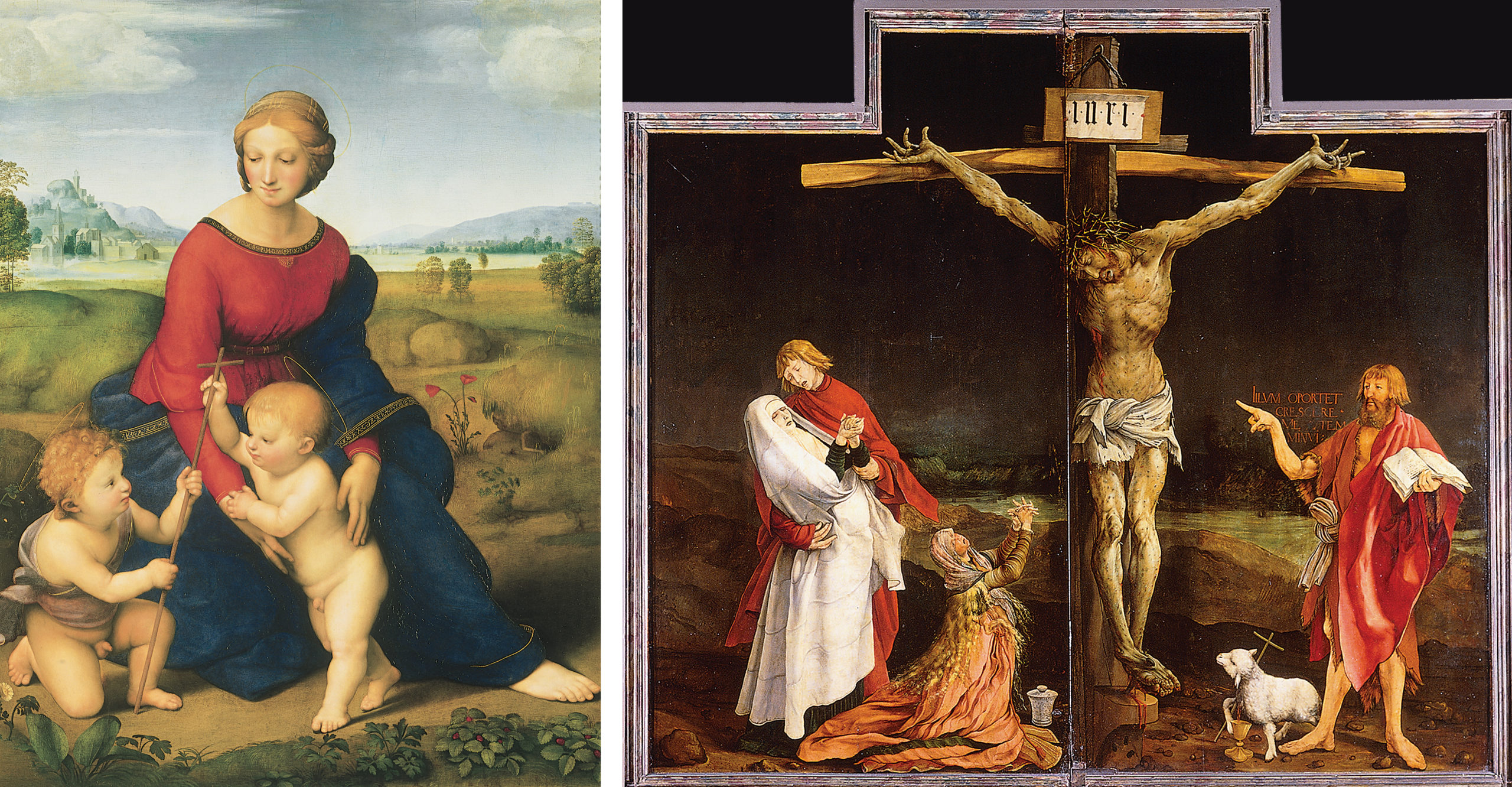
Left: Raphael, Madonna of the Meadow, 1506, oil on board, 113 x 88 cm (Kunsthistorische Museum, Vienna); right: Matthias Grünewald, Crucifixion from the Isenheim Altarpiece, 1512-16 (Unterlinden Museum, Colmar, France)
The psychological contrast that Nolde suggests between Matthias Grünewald’s Isenheim Altarpiece and a Raphael Madonna could not be more pronounced. Not only is the latter, showing a Virgin and Child in a meadow, an inherently more tranquil subject than Grünewald’s harrowing Crucifixion, we can also recognize some of Worringer’s distinctions between Latin and Gothic forms. Raphael’s painting emphasizes deep space, soft curves, and idealization, whereas Grünewald’s altarpiece features flattened space, jagged, angular shapes, and dark, gruesome realism.
Coda: Expressionism and National Socialism
It is one of the great ironies of art history that the best-known propagandists of German nationalism, the Nazi party of the 1930s and 40s, supported Mediterranean Classicism rather than the Northern “Gothic” artistic tradition identified by Worringer and the Expressionists. Far from being celebrated as a native hero by the Nazis, Emil Nolde was issued a Malverbot (German for “forbidden to paint”), and 27 of his works were featured in the Degenerate Art exhibition that Hitler sponsored in 1937.
It should also be noted that these distinctions between “Mediterranean” and “Gothic” style depend upon a careful selection of examples, and that the extrapolation of those distinctions into temperamental, spiritual, or “racial” differences tends to be ideologically motivated. Regional differences can be identified in the history of art, but art historians today more commonly attribute them to conventional cultural traditions, rather than innate or climatologically-determined psychological or spiritual differences.
Notes:
- Edvard Munch, entry from the ‘Violet Diary,’ Nice, 22 January 1892, as translated by Ingeborg Owesen in Charles Harrison and Paul Wood, eds., Art in Theory, 1815-1900 (Oxford: Blackwell, 1998), p. 1044.
- Wilhelm Worringer, Form Problems of the Gothic, unknown translator, (New York: G. E. Stechert, [1920]), pp. 43, 35.
- Ibid., pp. 49-50.
- Emil Nolde, Jahre der Kämpf (Berlin, 1934), as translated by Ernest Mundt in Herschel B. Chipp, ed., Theories of Modern Art (Berkeley, L.A. and London: University of California Press, 1968), p. 151.

